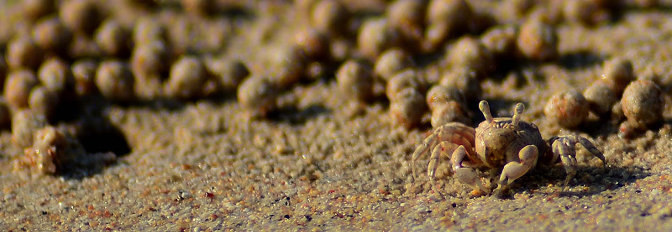
Program
08:30–09:00Registration
09:00–09:05Welcome address
Nilanjan Banerjee (University of Maryland Baltimore County)
09:05–10:00Keynote speech
- Sonar Inside Your Body: Toward Implantable Sensor Networks
- Dr. Tommaso Melodia (Northeastern University, ECE Department)
Abstract : Wirelessly networked systems of implantable sensors and actuators could enable revolutionary new applications with a potential to advance the medical treatment of major diseases of our times. Yet, most “body area networks” research to date has focused on communications among devices interconnected through traditional electromagnetic radio-frequency (RF) waves (often along the body surface); while the key challenge of enabling networked intra-body miniaturized sensors and actuators that communicate through body tissues is largely unaddressed. The main obstacle is posed by the physical nature of propagation in the human body, which is composed primarily of water – a medium through which RF electromagnetic waves do not propagate well. In this talk, I will give an overview of our ongoing work exploring a different approach, i.e., establishing wireless networks through human tissues by means of acoustic waves at ultrasonic frequencies. We will start off by discussing fundamental aspects of ultrasonic propagation in human tissues and their impact on wireless protocol design at different layers of the protocol stack. We will then discuss our research on designing and prototyping ultrasonic networking protocols through a closed-loop combination of mathematical modeling, simulation, and experimental evaluation.
 About the speaker :
Tommaso Melodia is an Associate Professor with the Department of Electrical and Computer Engineering at Northeastern University in Boston. He received his Ph.D. in Electrical and Computer Engineering from the Georgia Institute of Technology in 2007. He is a recipient of the National Science Foundation CAREER award, and coauthored a paper that was recognized as the ISI Fast Breaking Paper in the field of Computer Science for February 2009 and of an ACM WUWNet 2013 Best Paper Award. He serves in the Editorial Boards of IEEE Transactions on Mobile Computing, IEEE Transactions on Wireless Communications, IEEE Transactions on Multimedia, and Computer Networks (Elsevier). His current research interests are in modeling, optimization, and experimental evaluation of networked communication systems, with applications to ultrasonic intra-body networks, cognitive and cooperative networks, multimedia sensor networks, and underwater networks.
About the speaker :
Tommaso Melodia is an Associate Professor with the Department of Electrical and Computer Engineering at Northeastern University in Boston. He received his Ph.D. in Electrical and Computer Engineering from the Georgia Institute of Technology in 2007. He is a recipient of the National Science Foundation CAREER award, and coauthored a paper that was recognized as the ISI Fast Breaking Paper in the field of Computer Science for February 2009 and of an ACM WUWNet 2013 Best Paper Award. He serves in the Editorial Boards of IEEE Transactions on Mobile Computing, IEEE Transactions on Wireless Communications, IEEE Transactions on Multimedia, and Computer Networks (Elsevier). His current research interests are in modeling, optimization, and experimental evaluation of networked communication systems, with applications to ultrasonic intra-body networks, cognitive and cooperative networks, multimedia sensor networks, and underwater networks.
10:00–10:30Coffee break
10:30–12:00Session 1: IoT Applications
Session chair: Nilanjan Banerjee (University of Maryland, Baltimore County)
- A Rational Mechanism for Coordinating Crowdsourced Resources for Geo-‐temporal Request Satisfaction
- Christine Bassem and Azer Bestavros (Boston University, USA)
- Experiments with Security and Privacy in IoT Networks
- Mary R Schurgot and David Shinberg (LGS Innovations, USA); Lloyd Greenwald (LGS Innovations / Bell Labs, USA)
- PhyNetLab: Architecture Design of Ultra-‐Low Power Wireless Sensor Network Testbed
- Aswin Karthik Ramachandran Venkatapathy, Moritz Roidl, Jan Emmerich and Andreas Riesner (TU Dortmund University,Germany); Michael ten Hompel (TU Dortmund, University of Technology & Fraunhofer-Institut Materialflow and Logistics, Germany)
- Cost-‐efficient universal Approach for Remote Meter Reading Using Web Services and Computer Vision
- Henning Puttnies, Vlado Altmann, Frank Golatowski and Dirk Timmermann (University of Rostock, Germany)
12:00–1:30Lunch break
1:30–2:45Session 2: Wireless Systems
Session chair: Dr. Mary R. Schurgot (LGS Innovations, USA)
- An IEEE 802.11ah Programmable Modem
- Raul Casas, Vakis Papaparaskeva and Xuehong Mao (Cadence Design Systems, USA); Rishi Kumar and Piyush Kaul (Cadence Design Systems, India); Samer Hijazi (Cadence Design Systems, USA)
- Performance Analysis of IoT-‐Enabling IEEE 802.11ah Technology and its RAW Mechanism with Non-‐Cross Slot Boundary Holding Schemes
- Muhammad Qutab-ud-din and Ali Hazmi (Tampere University of Technology, Finland); Behnam Badihi, Anna Larmo and Johan Torsner (Ericsson Research, Finland); Mikko Valkama (Tampere University of Technology, Finland)
- Highly Scalable Fair Contention Resolution Scheme Based on Idle Time
- Byung-Jae Kwak(Electronics and Telecommuncations Research Institute, Korea); Junhyuk Kim (KAIST, Korea); Nah-Oak Song (Korea Advanced Institute of Science and Technology (KAIST), Korea); Kyounghye Kim and June-Koo Kevin Rhee (KAIST, Korea); Kapseok Chang (ETRI, Korea); Moon-Sik Lee (Electronics and Telecommunications Research Institute & Stanford University, Korea)

